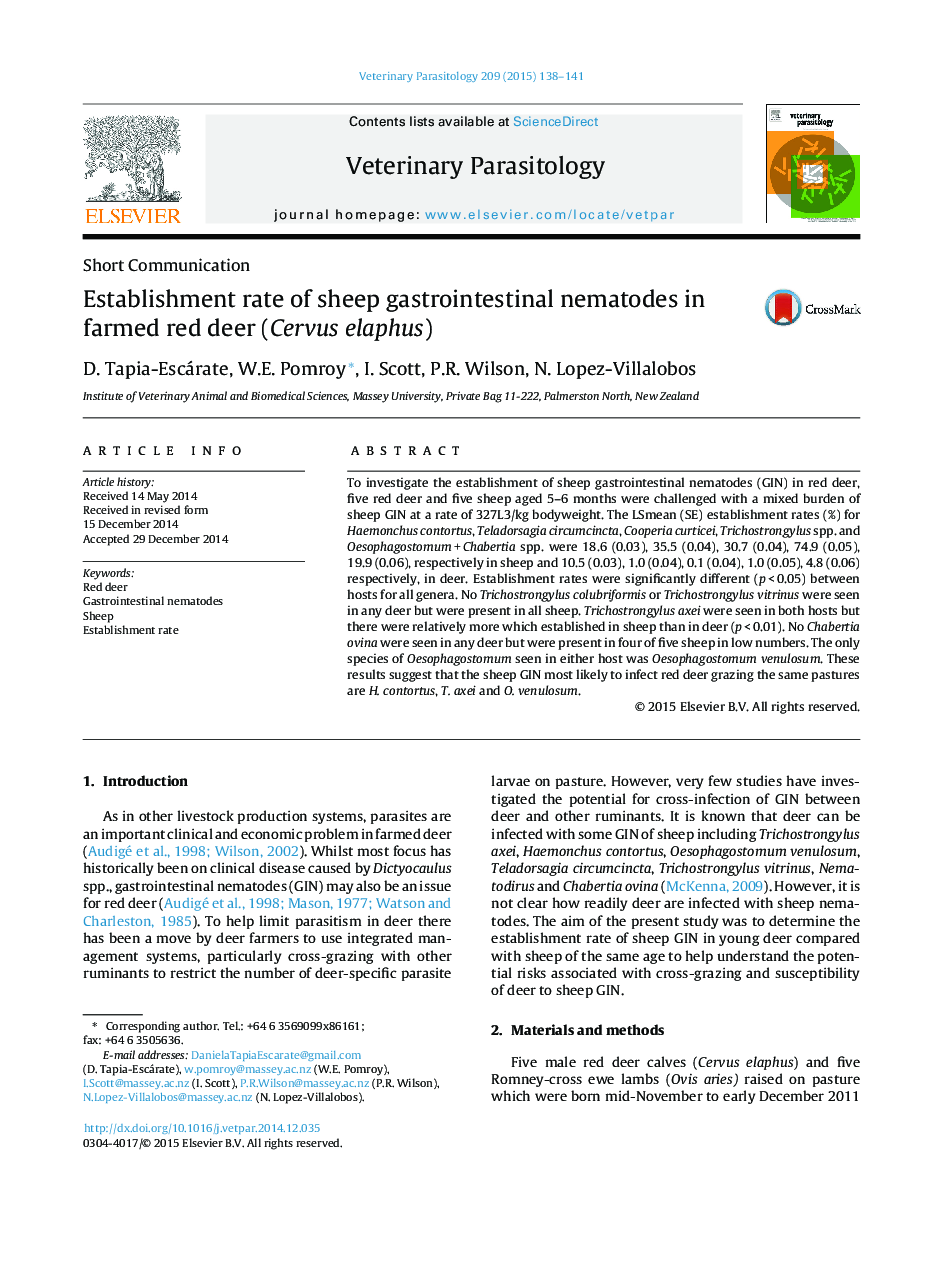| کد مقاله | کد نشریه | سال انتشار | مقاله انگلیسی | نسخه تمام متن |
|---|---|---|---|---|
| 5802571 | 1555673 | 2015 | 4 صفحه PDF | دانلود رایگان |

- Fewer sheep-origin gastrointestinal nematodes established in deer than in sheep.
- Deer had highest establishments rates for H. contortus, T. axei and O. venulosum.
- T. colubriformis and T. vitrinus were seen in all sheep but not in deer.
- Sheep nematodes of highest risk to grazed deer are H. contortus and T. axei.
To investigate the establishment of sheep gastrointestinal nematodes (GIN) in red deer, five red deer and five sheep aged 5-6 months were challenged with a mixed burden of sheep GIN at a rate of 327L3/kg bodyweight. The LSmean (SE) establishment rates (%) for Haemonchus contortus, Teladorsagia circumcincta, Cooperia curticei, Trichostrongylus spp. and Oesophagostomum + Chabertia spp. were 18.6 (0.03), 35.5 (0.04), 30.7 (0.04), 74.9 (0.05), 19.9 (0.06), respectively in sheep and 10.5 (0.03), 1.0 (0.04), 0.1 (0.04), 1.0 (0.05), 4.8 (0.06) respectively, in deer. Establishment rates were significantly different (p < 0.05) between hosts for all genera. No Trichostrongylus colubriformis or Trichostrongylus vitrinus were seen in any deer but were present in all sheep. Trichostrongylus axei were seen in both hosts but there were relatively more which established in sheep than in deer (p < 0.01). No Chabertia ovina were seen in any deer but were present in four of five sheep in low numbers. The only species of Oesophagostomum seen in either host was Oesophagostomum venulosum. These results suggest that the sheep GIN most likely to infect red deer grazing the same pastures are H. contortus, T. axei and O. venulosum.
Journal: Veterinary Parasitology - Volume 209, Issues 1â2, 15 April 2015, Pages 138-141